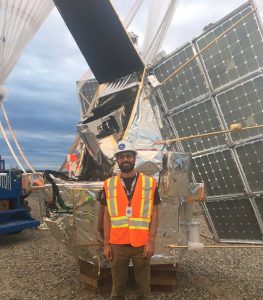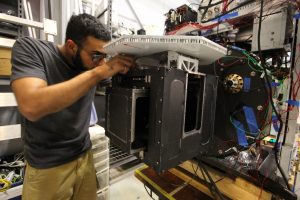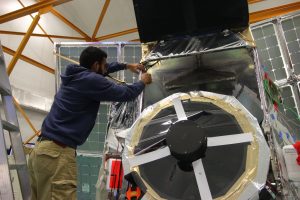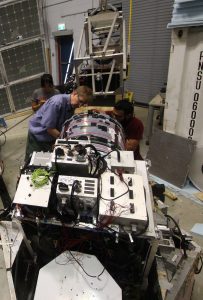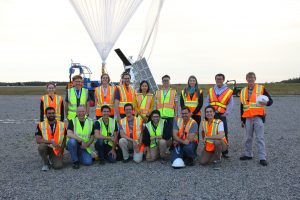Ajay Gill is originally from Amritsar, India. He’s a third-year PhD student in the Department of Astronomy and Astrophysics and the Dunlap Institute, and his research focuses on experimental cosmology. Specifically, he studies the large-scale structure of the Universe by developing and using novel astronomical instrumentation.
As an undergraduate, I spent a summer working in a rural district in Ghana through a non-governmental organization. Due to the lack of electricity, there was no light pollution in the district. In the evenings, I would sit with my host family by the fire under the stars, and we often spent hours simply looking up at the night sky. Although my host family and I could not speak each other’s language and grew up under completely different socio-economic and political circumstances, the beauty and vastness of the night sky fostered a mutual understanding between us that we are all part of something much bigger. These moments are deeply profound and beautiful. It is clear to me that humans have been fascinated by the cosmos for hundreds of thousands of years. From my perspective, the opportunity to study astronomy at the University of Toronto, and to continue the human quest to better understand how the Universe works and our place within it, is truly a privilege.
Can you tell us a little bit about your specific field of research?
The nature of dark energy and dark matter form two of the most profound mysteries in modern physics. One method to understand the behaviour of dark energy and dark matter is to study the growth and evolution of large-scale structure in the Universe. Specifically, my research focuses on probing the large-scale structure by using weak gravitational lensing to study how galaxy clusters evolve over time. To do so, I work on the instrumentation development and the software analysis of the SuperBIT balloon-borne telescope. SuperBIT is a 0.5 meter near-ultraviolet to near-infrared telescope capable of taking high resolution astronomical images from the stratosphere. In addition to SuperBIT, I’m also working on a project with colleagues at the Dunlap Institute to design, develop, and launch a low-cost ultraviolet telescope into orbit on a small satellite.
What makes experiments like SuperBIT so unique?
The quality of astronomical images from the ground is limited due to the refraction of light in the Earth’s atmosphere. Therefore, high resolution images from space telescopes are required to perform weak lensing measurements with sufficient precision to constrain the nature of dark energy and dark matter. However, the challenge is that the existing space telescopes, like the Hubble Space Telescope, are oversubscribed, and future space telescopes tend to be very expensive and have long development timescales. The advantage of experiments like SuperBIT is that they enable space-quality astronomical observations at a fraction of the cost and faster development timescales compared to traditional space missions. Experiments like SuperBIT also provide high-quality training to the graduate students in various phases of a mission, ranging from the instrument development and the launch of the mission to the scientific data analysis and publications of the results.
What do you you hope will be your next step, professionally?
I hope to continue to work on weak lensing analysis and large-scale structure. I also hope to bridge the gap between rapid innovations in engineering and astrophysics by working toward a future in which individual academic institutions are able to design, develop, and operate world-class astronomical instruments at a low cost, while also providing the training opportunity for instrument development and data analysis for the students.
To learn more about SuperBIT, you can visit sites.physics.utoronto.ca/bit, or the team’s Instagram page.


